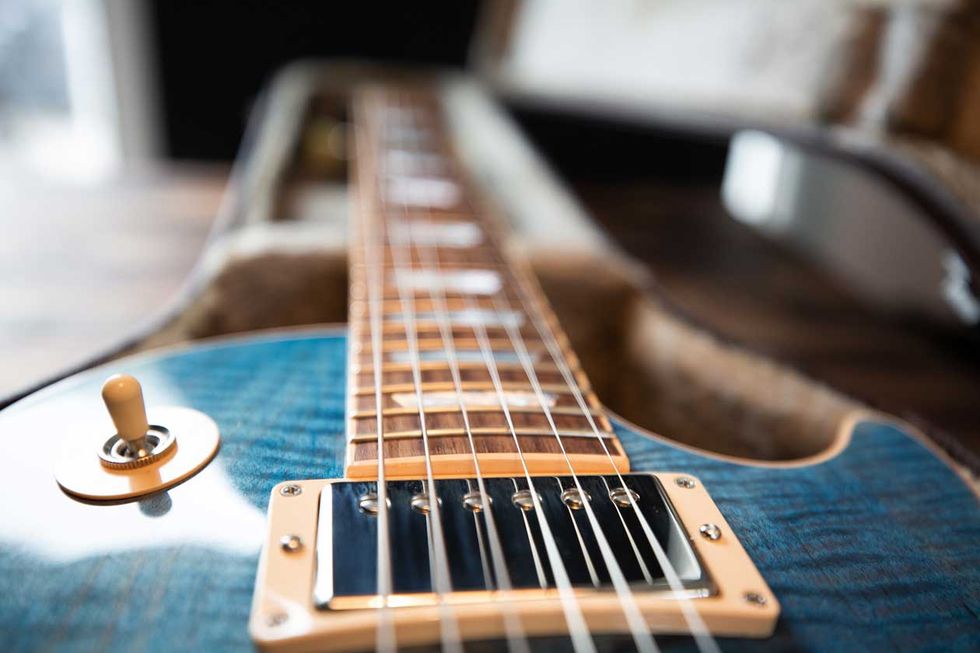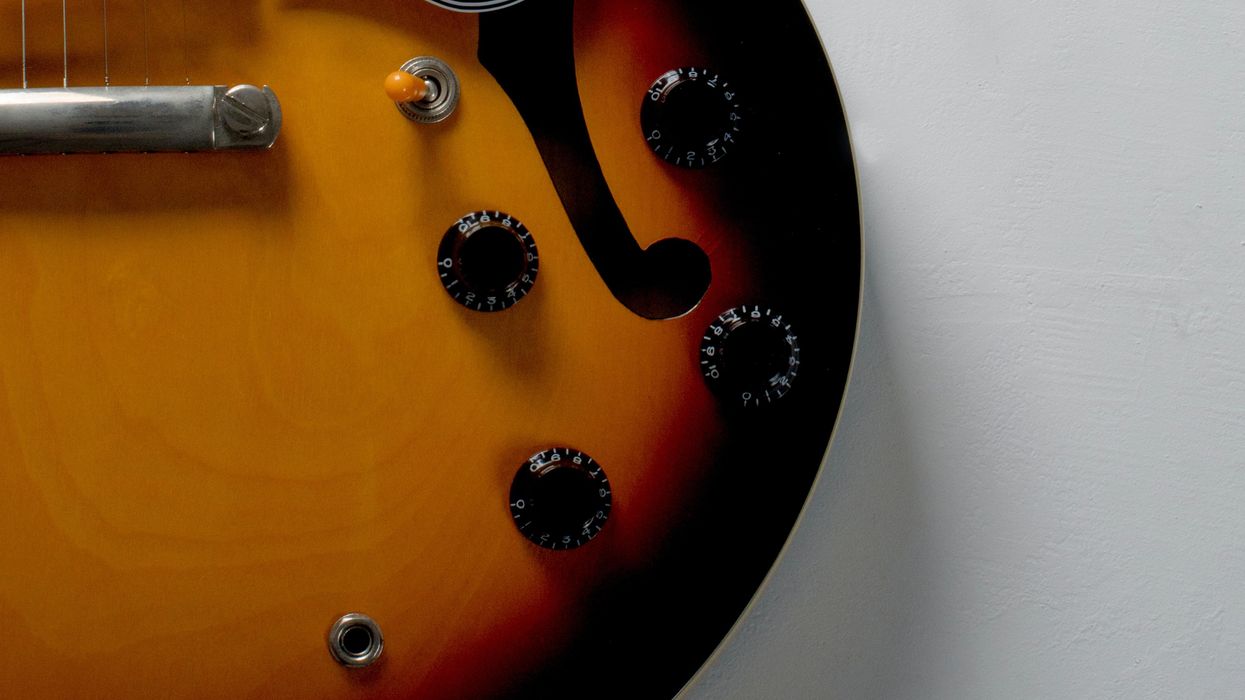Let’s start with a simple idea in Ex. 1. It consists of four sixteenth-notes from the A minor pentatonic scale (A–C–D–E–G) in the 5th position. Once you get this phrase under your fingers, the rest of the lesson will come together nicely. The picking I use for this lick is a downstroke followed by a pull-off, another downstroke, and then one upstroke. I’ve seen many people start with an upstroke and change it up. It’s your call.
Now that you have the idea let’s break out and head up the neck. In Ex. 2, we move to the 8th position. If you want to think in terms of the pentatonic scale, we are moving each note in the motif up to the next available scale tone, with the same picking pattern. Put the two ideas together and start playing them two times each. We are going to keep going up.
Ex. 3 is based out of the 10th position and begins with a C on the 2nd string. Experiment with fingerings on each one of these. It helps to have a few different ways to come in and out of each escape route.
For Ex. 4, Ex. 5, and Ex. 6 we continue up the pentatonic scale. Learn how to visualize the scale that surrounds each fragment—it will help considerably when putting these into practice. Also, notice that Ex. 6 feels very familiar. It’s our original motif transposed up an octave.
Now it’s time to put everything we’ve learned so far together. In Ex. 7, I’ve written out a longer lick that connects each of our previous examples. As you can hear in the audio, I’ve taken liberties with the phrasing by ghosting some notes and palm-muting others. These come out naturally in my playing, but find the ideas and concepts that pop out in your playing and lean into them. That’s a major step in finding your own sound.
You’ve now made it through five different escape routes moving through five positions of the A minor pentatonic scale. In the heat of a gig you can pull any one of these out as a “repeater” that works up the crowd (think of all those fast licks in “Freebird”) or as a way to seamlessly transition to a different pentatonic box.
I altered our original motivic pattern for Ex. 8. I took our exact phrase from Ex. 1 and expanded it on the second repeat by reaching up and grabbing the A with my pinky. Yes, it’s a stretch, but it allows you to squeeze yet another variation out of this lick. Don’t worry, when you try this out with the previous licks it’s a bit easier since the frets are closer together.
Now, imagine you’re stepping out front to rip a dozen or so choruses on an over-caffeinated version of “Train Kept A-Rollin’” when you bust out Ex. 9, which is simply a “repeater” version of Ex. 8. And the crowd goes wild.
These have been heard in everything from Southern rock to metal and nearly everything in between. Make sure to practice these evenly with a metronome and experiment with them on other string sets and in other keys. Escaping from the box is something we all need to do at various points in our journey. Use this newfound freedom for good. You’ll be glad you did!

















